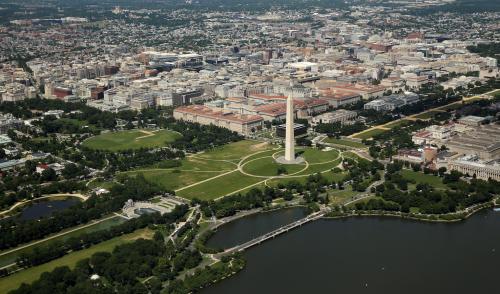In a new paper, “Introducing the new government reform majority: What Americans want from reform in 2018,” Paul Light makes a provocative claim in the era of President Trump: the future of reform may rest with those who want to rebuild government. Although Mr. Trump was swept to office under a message of reducing government, “draining the swap,” and shrinking the federal workforce, these new data suggest that Americans are prepared for a different path.
Using surveys of Americans, Light breaks their responses up into four categories based on whether they want government to do more or do less, and whether they believe government needs major reform or needs only some reform. Those four categories are “dismantlers,” “streamliners,” “rebuilders,” and “expanders.” Rebuilders “would rather have a bigger government providing more services,” but also believe “the federal government needs very major reform.” While this group accounts for only 31 percent of the public—a few percentage points behind those who want reform and a smaller government (dismantlers)—rebuilders are the fastest-growing group of Americans.
Between 2010 and 2018, rebuilders have doubled in size from 16 to 31 percent and are the only group that has grown consistently during that time. Rebuilders can play a pivotal role in future politics, especially the 2018 midterms and the 2020 presidential election, as they push back significantly against what Mr. Trump and the Republican Congress has called for—a significantly reduced government. While this group is unhappy with the manner in which government operates, their goal is a better, more functional government. Surely in an era of government dysfunction, particularly in Congress, an American public striving for something better is not surprising.
However, the key to winning this group, Light notes, is to argue for an expanded role of government that those voters believe can function well. Although many of the leaders of the Democratic Party are calling for massive expansions of government including Medicare for All, free college, universal childcare, and other programs, the burden for Democrats rests with convincing rebuilders not that government should play these roles, but that government can administer these programs effectively.
Light’s paper is effective in segmenting American politics in a way that departs from the norm. Partisanship and ideology tends to be the manner in which we group Americans as we approach an election. Yet, this paper suggests that talking about what government does and how well it can deliver on its promises may be a powerful message to Americans who are looking for something different. In that sense, while some voters may want to Make America Great Again, many simply want to grow the federal government and make it functional again.
The Brookings Institution is committed to quality, independence, and impact.
We are supported by a diverse array of funders. In line with our values and policies, each Brookings publication represents the sole views of its author(s).









Commentary
What do Americans want from government reform?
August 15, 2018